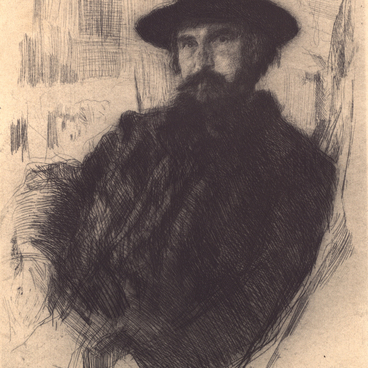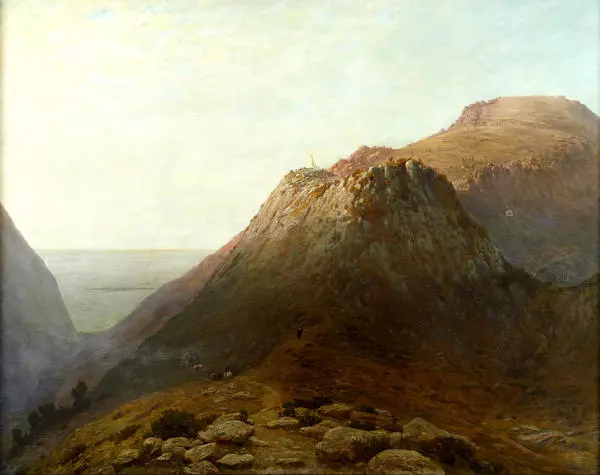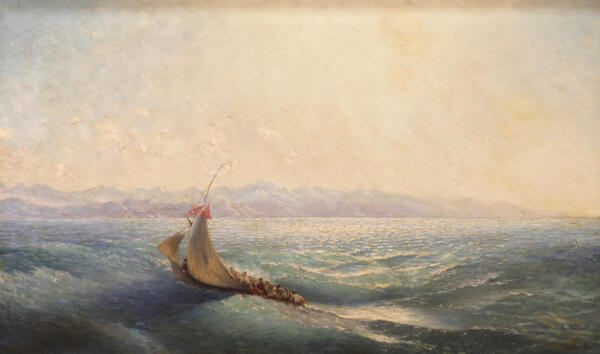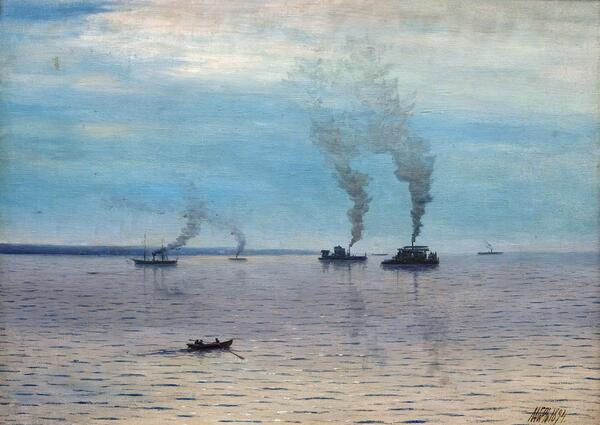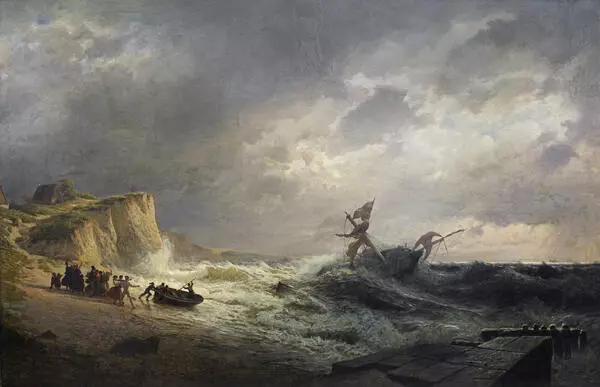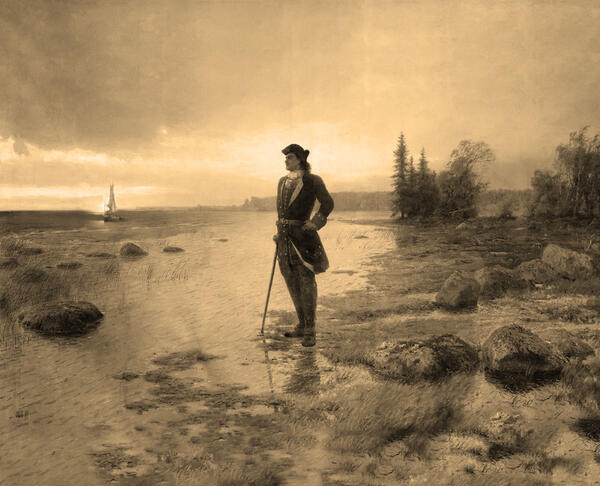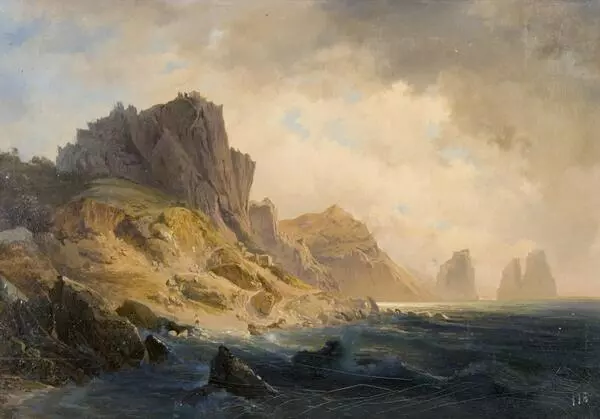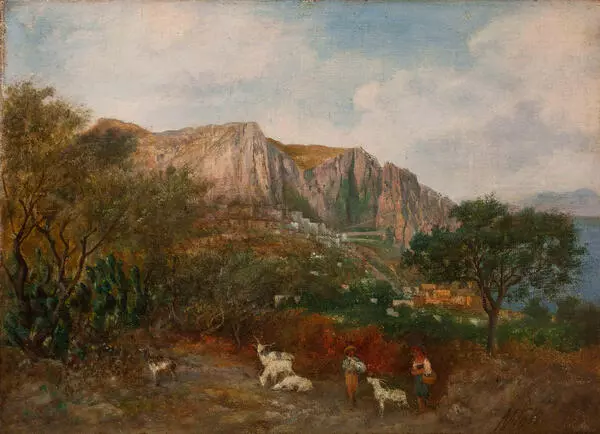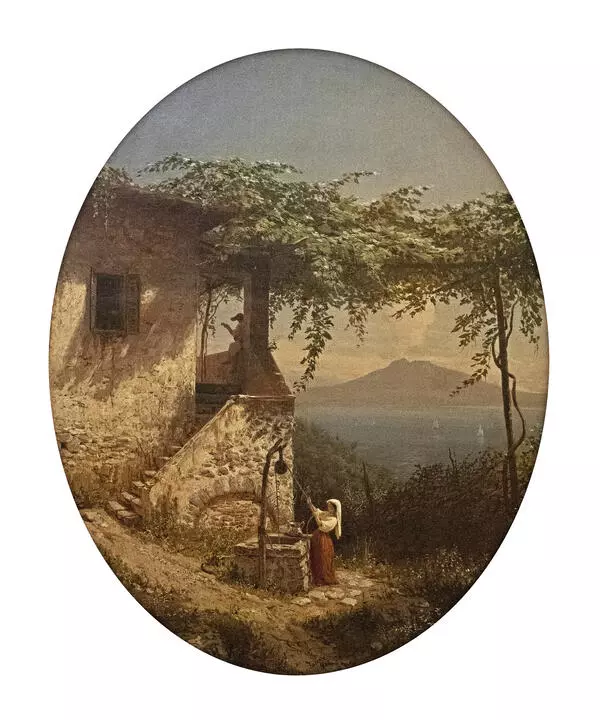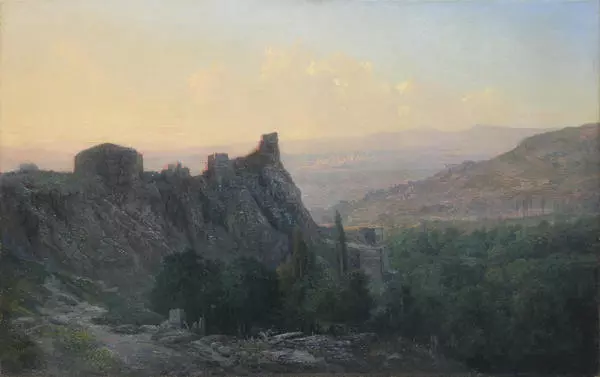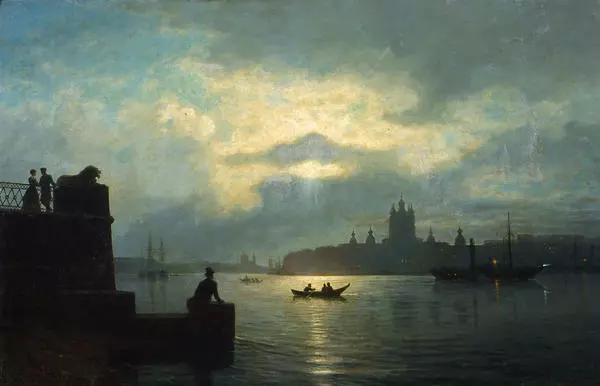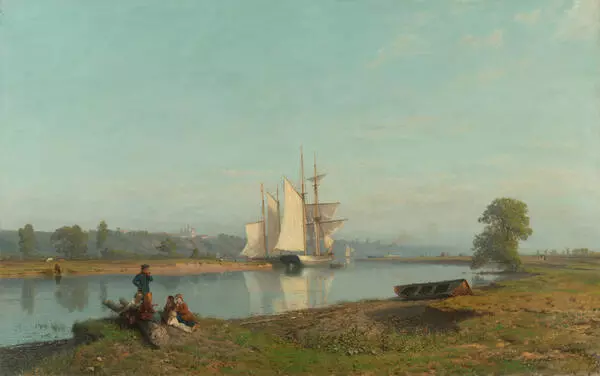Lev Lagorio was the best student of Aivasovsky and one of the highly renowned masters of marine art in Russia.
A native Italian, he took Russian citizenship and lived in Russia all his life. Lev Lagorio came from a noble family. His father, descendant of an aristocratic Genoese family served as Vice-Consul for the Kingdom of the Two Sicilies. The future artist was born in Feodosia and educated in the local gymnasium. He took up painting in his childhood. In 1839 and 1840 he received artistic training in the studio of Ivan Aivazovsky in Feodosia. The work under the great sea landscape painter largely determined the themes of Lagorio’s future paintings. In 1843, 16-year-old Lev Lagorio got enrolled in the Imperial Academy of Arts.
His teachers were professors in landscape and battle painting classes, Vorovyev and Saurweid. In 1850, Lagorio graduated from the Academy with honors. He was awarded the Big Gold Medal for his painting View of the Lisi Nos Swamp and a subsidized trip abroad. He lived in Europe for eight years. In Paris, in 1853, Lagorio studied the artwork of French masters, then in 1854, moved to Rome. The artist stayed in Europe for two more years for his own account after his pension term expired.
In 1860, upon return to Russia Lev Lagorio he was granted the status of professor for his paintings brought from the trip. By the late 1850s, the artist became a celebrity: he participated in exhibitions, made acquaintance with influential people, and received large painting commissions. A portion of Lagorio’s artistic heritage is devoted to the history of the Russian army and navy. He painted watercolor views of Crimea and Caucasus, and occasional portraits. His sea landscapes were made in diverse locations: Crimea, Caucasus, France, Italy, and late in his life he also worked in Finland and Norway. The paintings View of Lakhta (about 1850), Normandy Beach (1859), Sea Coast (1860), and Caucasian View (early 1860s) are his best known works.
In 1900, Lagorio was elected Honorary Member of the Academy of Arts, five years later, he passed away.
The landscape Mountain Lake from the Kaluga Museum collection was painted in the artist’s most flourishing creative period. Assumingly, it belongs to a series of landscapes created by Lagorio following his trip to Caucasus in 1850 and presented to the Academy Board in 1852.
A native Italian, he took Russian citizenship and lived in Russia all his life. Lev Lagorio came from a noble family. His father, descendant of an aristocratic Genoese family served as Vice-Consul for the Kingdom of the Two Sicilies. The future artist was born in Feodosia and educated in the local gymnasium. He took up painting in his childhood. In 1839 and 1840 he received artistic training in the studio of Ivan Aivazovsky in Feodosia. The work under the great sea landscape painter largely determined the themes of Lagorio’s future paintings. In 1843, 16-year-old Lev Lagorio got enrolled in the Imperial Academy of Arts.
His teachers were professors in landscape and battle painting classes, Vorovyev and Saurweid. In 1850, Lagorio graduated from the Academy with honors. He was awarded the Big Gold Medal for his painting View of the Lisi Nos Swamp and a subsidized trip abroad. He lived in Europe for eight years. In Paris, in 1853, Lagorio studied the artwork of French masters, then in 1854, moved to Rome. The artist stayed in Europe for two more years for his own account after his pension term expired.
In 1860, upon return to Russia Lev Lagorio he was granted the status of professor for his paintings brought from the trip. By the late 1850s, the artist became a celebrity: he participated in exhibitions, made acquaintance with influential people, and received large painting commissions. A portion of Lagorio’s artistic heritage is devoted to the history of the Russian army and navy. He painted watercolor views of Crimea and Caucasus, and occasional portraits. His sea landscapes were made in diverse locations: Crimea, Caucasus, France, Italy, and late in his life he also worked in Finland and Norway. The paintings View of Lakhta (about 1850), Normandy Beach (1859), Sea Coast (1860), and Caucasian View (early 1860s) are his best known works.
In 1900, Lagorio was elected Honorary Member of the Academy of Arts, five years later, he passed away.
The landscape Mountain Lake from the Kaluga Museum collection was painted in the artist’s most flourishing creative period. Assumingly, it belongs to a series of landscapes created by Lagorio following his trip to Caucasus in 1850 and presented to the Academy Board in 1852.



